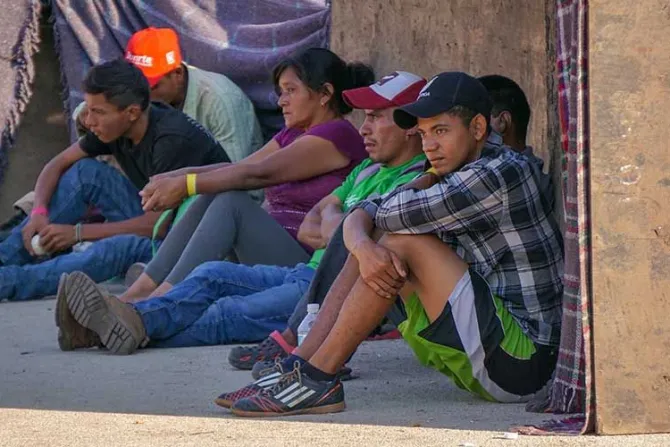Mexico City, Mexico, Nov 28, 2018 / 12:41 pm
Controversial "caravans" of Central American migrants have made headlines in recent weeks, and a quagmire at the U.S. southern border remains unresolved.
As policymakers and migrants consider their next steps, some have asked why migrants leave Central America to make a dangerous journey with an uncertain outcome.
Rick Jones, senior adviser on Migration and Public Policy for Catholic Relief Services (CRS) in Latin America, pointed to "three main reasons: violence, climate change and the lack of opportunities" in their countries of origin.
The first "migrant caravan" of 2018 left Oct. 13 from San Pedro Sula in Honduras. By the time they reached Mexico City in early November, they numbered more than 5,600 people. Other caravans followed in their steps.
"El Salvador and Honduras are among the five most violent countries in the world. In San Pedro Sula, for example, the homicide rate is 100 per 100,000 inhabitants," Jones said.
For comparison, Jones said that in Los Angeles, "the homicide rate is 6 per 100,000 inhabitants.
"The difference in the levels of violence is overwhelming."
Regarding climate change, Jones noted that "most rural people in Central America plant corn and beans which require a certain level of rainfall. If there's too much water, they lose [their crop], if there's no rain they lose [their crop]. And in Honduras, in the last five years they have had four years of drought, and this year 2018 they had drought followed by flooding. The people lost everything."
"Finally, the people don't have many options for work. Most people in El Salvador, for example, work 'off the books' and make two or three dollars a day. That's not enough to meet basic needs."
Jones said that the migrants "suffer along the way" to the United States. "They walk between eight and nine hours a day and their feet blister, their shoes have holes in them. At this point, many are sick, with respiratory infections and even pneumonia due to the low temperatures in northern Mexico."
"We're working with some sisters who are caring for them, but that's not enough," he said.
Jones said that CRS works in Central America with rural people, business owners, and young people looking for employment. Programs look to improve circumstances before people feel the need to migrate toward an uncertain future.
"We have a program called 'Young Builders' where we help young people get jobs. And we've placed about 15,000 young people in jobs throughout the last ten years. But it's a drop in the ocean.
There's more than a million youths who aren't studying or working."
They also help rural people "have real alternatives to planting corn and beans."
"In El Salvador we're supporting the reintroduction of the production of cocoa and that's generating income, and helps to better manage the water and the issue of the land," he said.
With these kind of projects, he said, people can hope to earn income and an improve the quality of their lives within their native countries.
(Story continues below)
This article was originally published by our sister agency, ACI Prensa. It has been translated and adapted by CNA.


